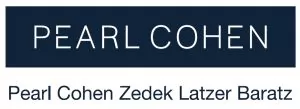The Paycheck Protection Program Flexibility Act of 2020
On Friday, June 5th, the President signed into law the Paycheck Protection Program Flexibility Act of 2020 (the Amendment) which amends certain elements of the Paycheck Protection Program, the $660 billion program created under the CARES Act to assist small businesses during the COVID-19 crisis (the PPP). The following are the changes made to the PPP by the Amendment:
Extensions of Covered Periods and Deadlines
- The Amendment extended the covered period of the PPP from June 30, 2020 to December 31, 2020.
- The Amendment increased the PPP loan forgiveness covered period from 8 weeks to the earlier of 24 weeks or December 31, 2020.
- Under the PPP, to be eligible for full loan forgiveness, an employer had until June 30th to re-hire employees that it had terminated or restore wages that it had reduced between February 15th and April 26th. The Amendment extended the deadline within which an employer can re-hire an employee or increase reduced wages back to their original amount from June 30th to December 31st.
Exemption Based on Employee Eligibility
The amount of a PPP loan that is eligible for forgiveness can be reduced if the employer terminated employees or reduced wages, and the terminated employees have not been re-hired or the reduced wages have not been restored by December 31st. However, under the Amendment, an employer's loan forgiveness eligibility will not be reduced if the employer can demonstrate in good faith that it is unable to rehire individuals who were employees on February 15, 2020 and is also unable to hire "similarly qualified employees for unfilled positions on or before December 31, 2020" or if it is unable "to return to the same level of business activity" as it had prior to February 15, 2020 due to a requirement to maintain certain sanitation, social distancing, or any other worker or customer safety requirements related to COVID-19.
PPP Loan Spending Requirement
Under previous Treasury Department guidance, PPP loan recipients were required to spend a minimum of 75% of the loan amount on payroll costs in order for the loan to be eligible for loan forgiveness. The Amendment reduced this threshold requirement to 60% and specified that up to 40% may be spent on payment of interest on any covered mortgage obligation, rent obligation, or any covered utility payment.
Loan Repayment Deferral
The Amendment revises the PPP to state that a PPP loan recipient does not have to make any loan repayment until "the date on which the amount of forgiveness determined under section 1106 of the CARES Act is remitted to the lender."
Commencement of Loan Repayment
Under the Amendment, a PPP loan recipient has ten months from the last day of the covered period to apply for loan forgiveness. If the PPP loan recipient does not apply for loan forgiveness within that time period, the PPP loan recipient will be required to begin making repayments of the PPP loan.
Originally published Jun 08, 2020
The content of this article is intended to provide a general guide to the subject matter. Specialist advice should be sought about your specific circumstances.

